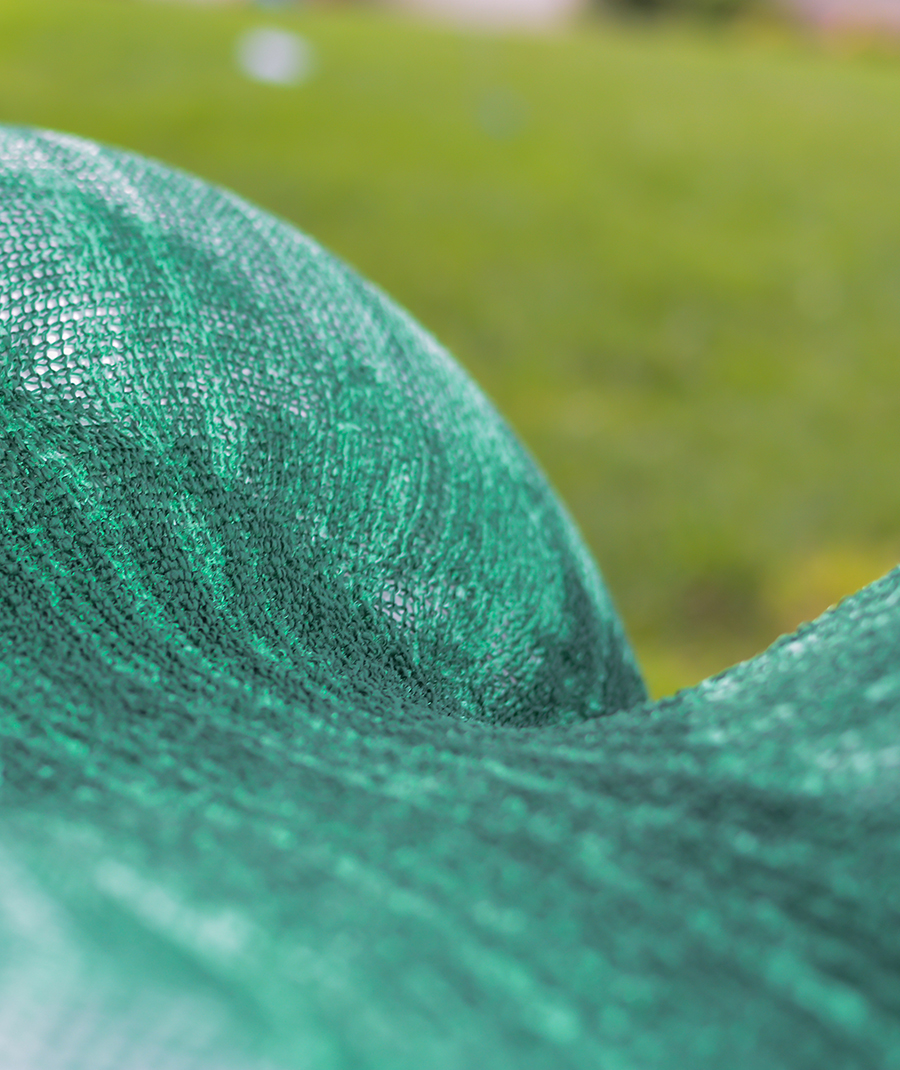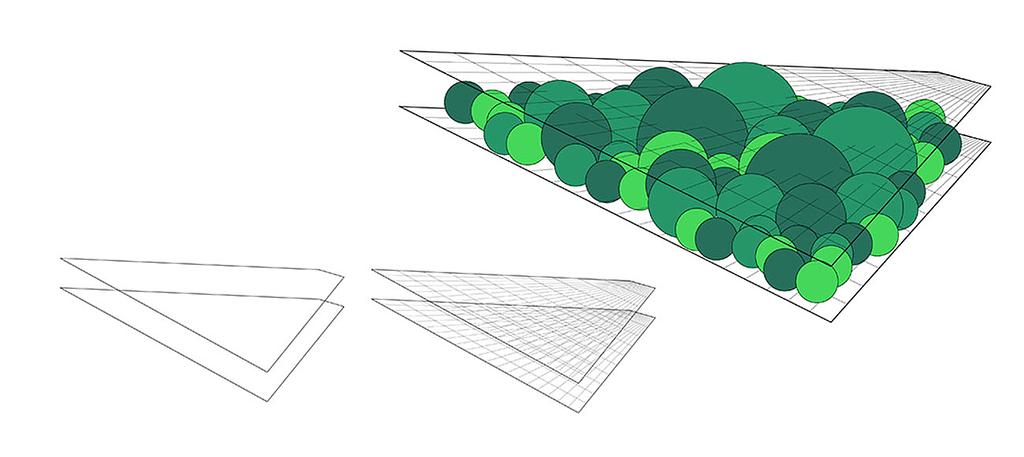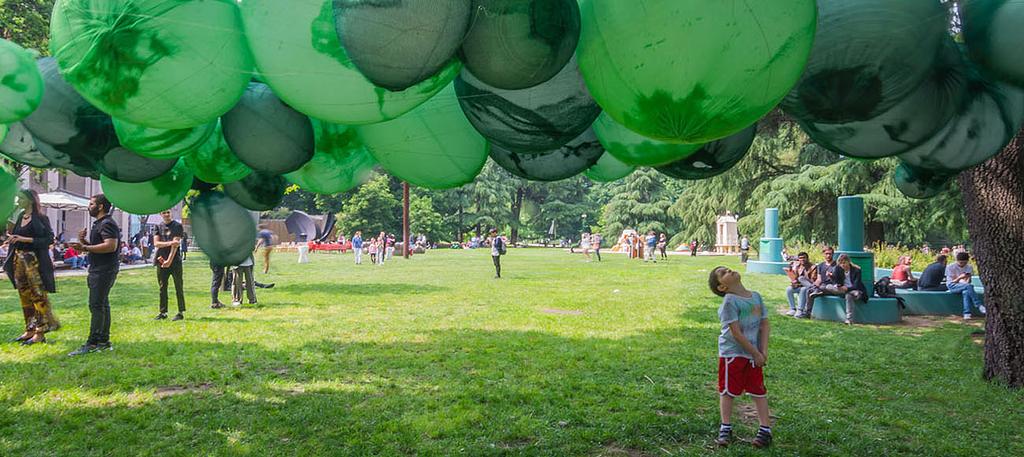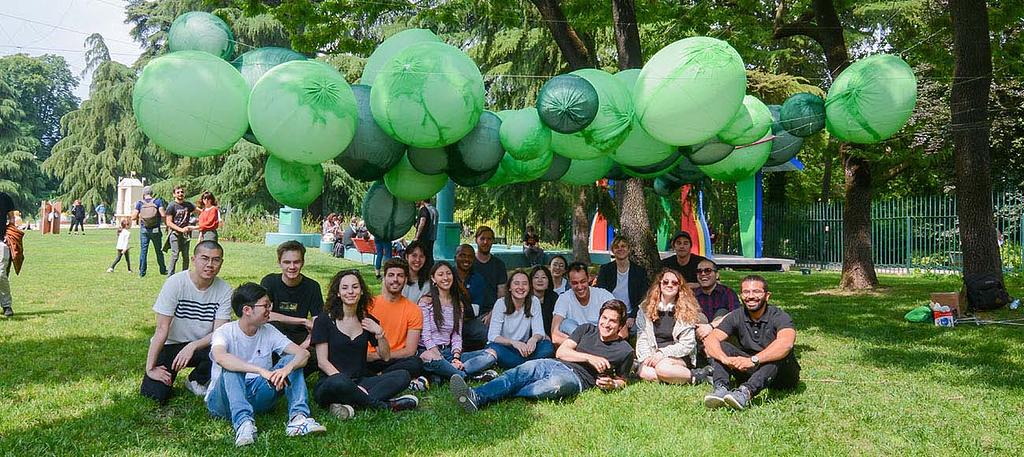As part of Architecture Week 2019 in Milan, a multidisciplinary collaboration between Politecnico di Milano students, architects, and fashion designers led to the creation of an interactive shading installation in the gardens of the Triennale di Milano.
Designed to serve both a functional and symbolic role, the installation provided shade for visitors while evoking the lightness and impermanence of clouds. The structure was composed of air-filled balloons resting on a handcrafted net, suspended between surrounding trees, gently floating and interacting with their environment.
Each balloon—the central element of the installation—was covered in a digitally knitted textile shell, produced using advanced digital knitting technology by the Italian company Kn-Hit. The fabrics, made in the form of seamless, rounded bags, were crafted from low-melt yarn supplied by Sinterama, composed of recycled plastic bottles. This material has the unique property of shrinking when exposed to heat, allowing the fabric to form tightly around the balloons and create sculptural surfaces and site-specific textures without the need for cutting or sewing.
The use of digital fabrication minimised material waste and assembly time. At the same time, the bold green tones of the textiles were carefully chosen to engage with the garden’s natural palette and to stand out as a statement of environmental awareness.
The installation served not only as a functional shading system but also as a sensory and visual experience—a contemporary architectural gesture that merged craft, technology, and sustainability.
VIDEO by Sebastian Guzman
Tutors:
Prof. Ingrid Paoletti, Maria Anishchenko, Mohamed Abdelkarim, Ofir Albag, Samir Al-Azri, Kasra Behforous, Rodrigo Scheeren
Participants:
Şeyma Adalı,, Mohammad Ahsani, Kasandra Bolivar, Gizem Begüm Boylu, Deniz Bucan, Jian Du, Alessia Galdi, Franco Garrido Huguet Selena Isildar, Aasish Janardhana, Chang Liu, Renato Magni, Mariela Saavedra Menacho, Martina Piccolo, Stefano Sciamarrelli, Dmitrii Shcherbakov, Maha Sobhy, Hanqiu Sun, Mengwei Wang, Alek Yordanov, Larashintya Galia Zhara.




